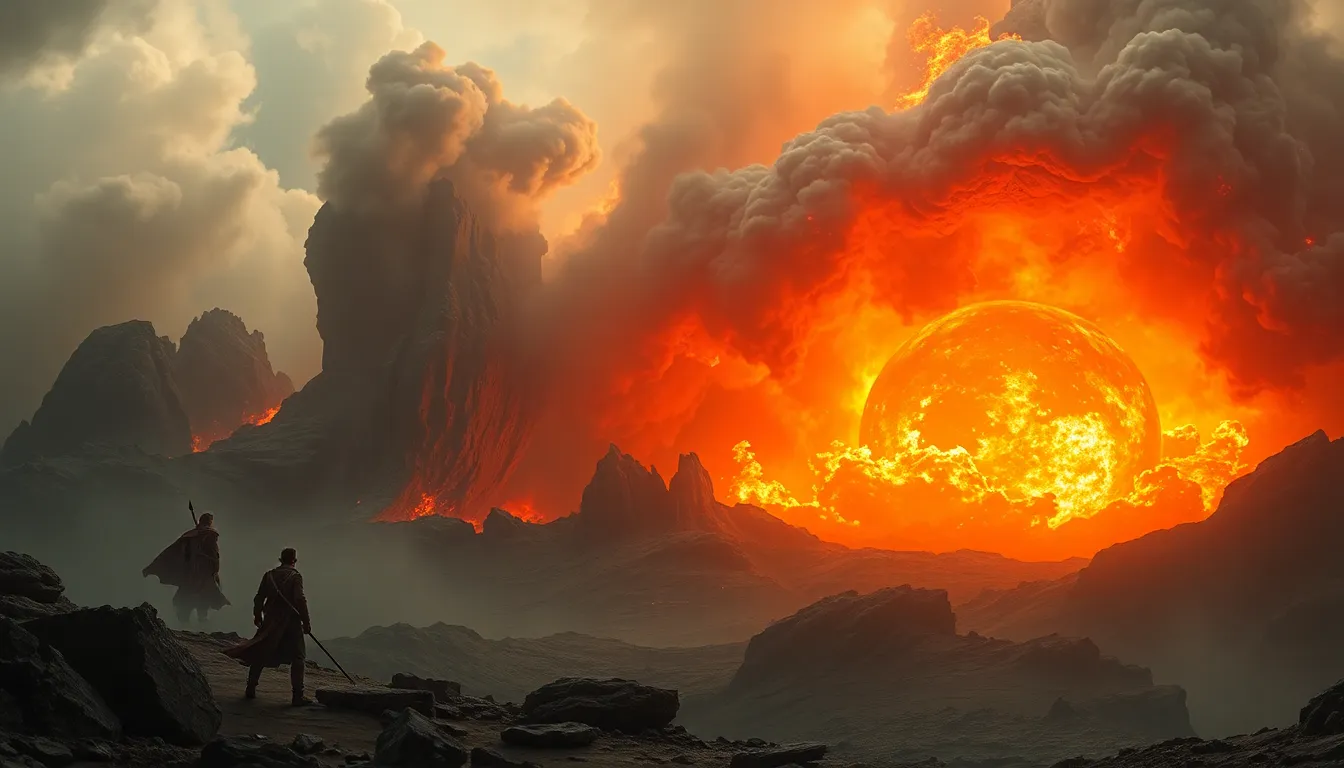The Myths of Armageddon: Origins and Interpretations
1. Introduction to Armageddon: Understanding the Concept
Armageddon, often associated with the end of the world, is a term that carries profound significance across various cultures and belief systems. It is typically defined as a final battle between good and evil, leading to the ultimate judgment of humanity. The concept has permeated religious texts, literature, and popular culture, often evoking images of catastrophic events and existential dread.
In religious contexts, Armageddon is frequently depicted as a prophetic event foretold in sacred texts, notably the Christian Book of Revelation. In popular culture, it has been sensationalized in movies, books, and television series, shaping public perception and understanding of apocalyptic scenarios. This article delves into the origins and interpretations of Armageddon, exploring its historical context, religious frameworks, cultural representations, psychological implications, and modern interpretations.
2. Historical Origins of the Armageddon Myth
The origins of the Armageddon myth can be traced back to ancient texts that contain prophecies about the end times. The term “Armageddon” itself is derived from the Hebrew “Har Megiddo,” referring to a site in Israel where numerous historical battles took place. This geographical location has been imbued with symbolic meaning, representing the ultimate confrontation between opposing forces.
Apocalyptic literature from Mesopotamia and Judeo-Christian traditions has significantly influenced the development of Armageddon narratives. For example, the Epic of Gilgamesh contains themes of mortality and divine judgment, while the Book of Daniel and the Revelation of John introduce vivid imagery of end-time events and the final battle against evil. These texts have shaped the collective imagination regarding the end of the world, blending myth with moral lessons.
3. The Role of Religious Frameworks in Shaping Armageddon
Armageddon’s interpretations vary significantly among different religious traditions. In Christianity, it is often associated with the Second Coming of Christ and the final judgment, where believers are rewarded, and non-believers face condemnation. Key prophetic figures, such as the Antichrist and the Beast, play crucial roles in these narratives, as outlined in the Book of Revelation.
In Islam, similar apocalyptic themes are present, with references to the Day of Judgment (Yawm al-Qiyamah) in the Quran. Islamic eschatology features figures like the Mahdi and Isa (Jesus), who will return to restore justice and defeat evil. Judaism also has its own eschatological visions, emphasizing themes of redemption and the coming of the Messiah.
- Christianity: Focus on the Second Coming and final judgment.
- Islam: Emphasis on the Day of Judgment and the return of prophetic figures.
- Judaism: Themes of redemption and the Messiah’s arrival.
4. Cultural Representations of Armageddon
Armageddon has been a popular subject in literature, film, and art, often reflecting societal fears and aspirations. From classic works like Dante’s “Divine Comedy” to modern films such as “Armageddon” and “The Day After Tomorrow,” these representations have captivated audiences and contributed to the mythology surrounding the end of the world.
In literature, dystopian narratives often explore themes of survival and moral dilemmas in post-apocalyptic settings. Films frequently depict large-scale disasters, emphasizing human resilience in the face of overwhelming odds. Additionally, art has played a role in visualizing apocalyptic themes, with artists using symbolism to express the fragility of existence.
The impact of popular media on public perception cannot be overstated. As these narratives permeate society, they shape fears and expectations regarding potential global crises, influencing how people perceive real-world events.
5. Psychological Perspectives on Apocalyptic Fears
The human psyche is deeply affected by fears of apocalyptic scenarios. Existential dread, anxiety, and the search for meaning often manifest in beliefs about Armageddon. Psychologists suggest that these fears can originate from a variety of sources:
- The desire for control in an unpredictable world.
- Collective trauma from historical events, such as wars and natural disasters.
- Media portrayal of catastrophic events, contributing to a sense of impending doom.
These psychological factors can lead individuals to embrace apocalyptic beliefs, sometimes finding solace in the idea of a divine plan or a greater purpose in the chaos.
6. Modern Interpretations and Misinterpretations
In contemporary society, various movements and sects interpret Armageddon in unique ways. Some religious groups focus on literal interpretations of prophecy, claiming imminent fulfillment of apocalyptic predictions. Others may adopt more metaphorical understandings, viewing Armageddon as a personal or spiritual transformation rather than a physical event.
Conspiracy theories also play a significant role in modern interpretations of Armageddon. From fears of government control to predictions of cataclysmic events, these theories can exacerbate societal anxieties and lead to a heightened sense of urgency regarding global issues.
7. Environmental and Social Implications of Armageddon Myths
The belief in Armageddon can significantly influence environmental policies and behaviors. Some individuals may feel a sense of futility in addressing climate change or social injustice, believing that these issues will culminate in a catastrophic end regardless of human action. Conversely, others may be motivated to take action, viewing their efforts as a way to stave off impending doom.
The social and political ramifications of apocalyptic thinking are profound. Political leaders may exploit these beliefs to justify extreme measures or policies, while grassroots movements may emerge in response to a perceived threat, advocating for change in the face of potential disaster.
8. Armageddon in the Age of Technology and Globalization
Modern technology and globalization have transformed the landscape of Armageddon narratives. The rapid spread of information through the internet allows for the quick dissemination of apocalyptic ideas, conspiracy theories, and doomsday predictions. This connectivity can create a sense of shared urgency, leading to global movements focused on prevention or preparation for potential disasters.
Additionally, advancements in technology raise new questions about the nature of Armageddon. Issues such as artificial intelligence, biotechnology, and cyber warfare introduce novel scenarios that challenge traditional apocalyptic narratives, prompting a re-evaluation of what constitutes an “end of the world” event.
9. Debunking the Myths: Scientific Perspectives on Catastrophe
From a scientific standpoint, many beliefs about global catastrophes are often exaggerated or misrepresented. While threats such as climate change, pandemics, and nuclear warfare are real and require serious attention, they do not necessarily align with mythological narratives of Armageddon. Scientists emphasize the importance of evidence-based approaches to understanding and addressing these issues.
For instance, climate change presents a significant challenge, but it is a problem that can be mitigated through collective action and policy changes, rather than an inevitable apocalyptic event. Public discourse should focus on practical solutions rather than succumbing to fatalistic beliefs.
10. Conclusion: The Future of Armageddon Myths in a Changing World
The myths of Armageddon have endured through centuries, adapting to cultural shifts and societal changes. As new challenges emerge, such as climate change and technological advancements, interpretations of Armageddon may evolve, reflecting contemporary fears and hopes.
In a rapidly changing world, it is essential to critically examine these myths and their implications. By fostering a rational discourse around apocalyptic beliefs, society can address real issues without resorting to fear-based narratives. The future of Armageddon myths may ultimately depend on humanity’s ability to navigate the complexities of existence and seek constructive solutions rather than succumbing to despair.



